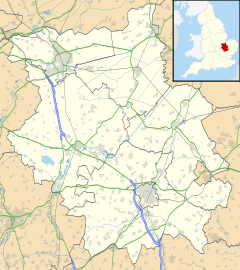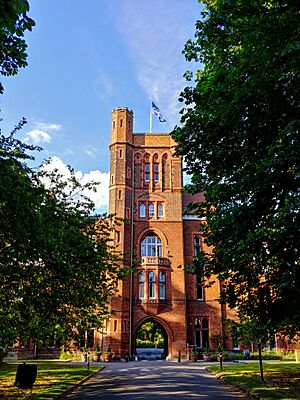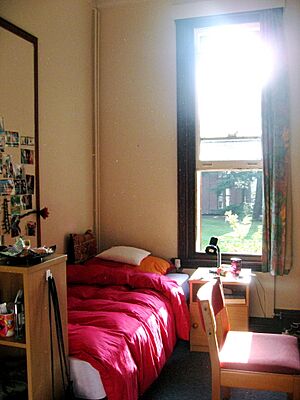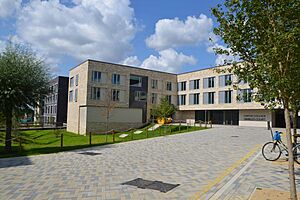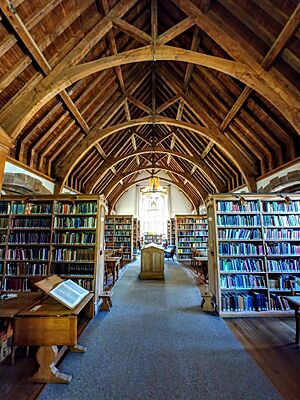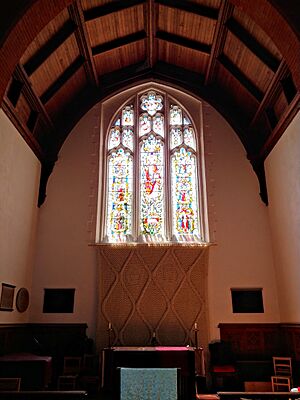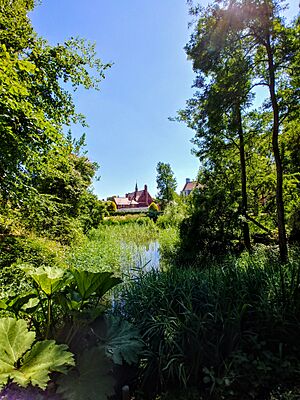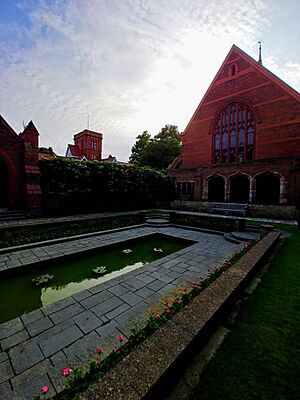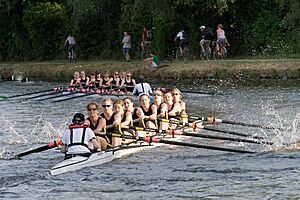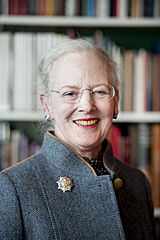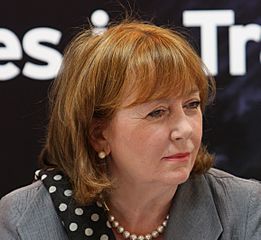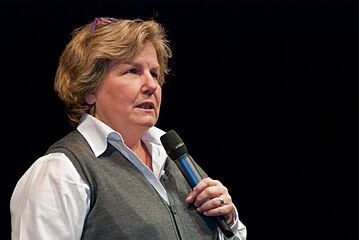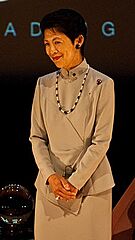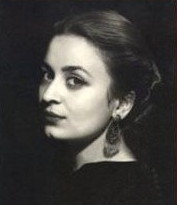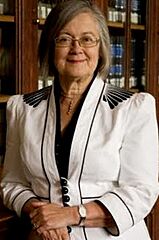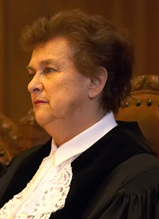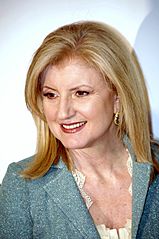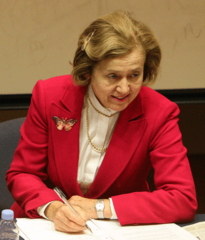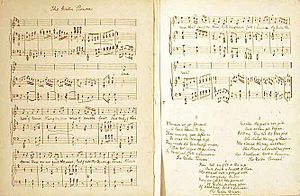Girton College, Cambridge facts for kids
Quick facts for kids Girton College |
||||||||||||||||
|---|---|---|---|---|---|---|---|---|---|---|---|---|---|---|---|---|
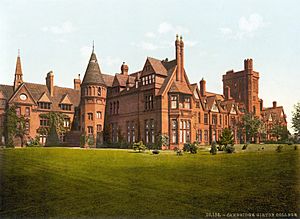
Girton College during the 1890s
|
||||||||||||||||

Blazon: see below
|
||||||||||||||||
|
|
||||||||||||||||
| University | University of Cambridge | |||||||||||||||
| Location | Huntingdon Road (map) | |||||||||||||||
| Coordinates | 52°13′43″N 0°05′02″E / 52.2286°N 0.0839°E | |||||||||||||||
| Abbreviation | G | |||||||||||||||
| Motto in English | Better is wisdom than weapons of war | |||||||||||||||
| Founders | ||||||||||||||||
| Established | 16 October 1869 | |||||||||||||||
| Named after | Girton village | |||||||||||||||
| Previous names | College for Women (until 1871) | |||||||||||||||
| Sister college | Somerville College, Oxford | |||||||||||||||
| Mistress | Elisabeth Kendall | |||||||||||||||
| Undergraduates | 534 (2022–23) | |||||||||||||||
| Postgraduates | 410 (2022–23) | |||||||||||||||
| Boat club | Girton College Boat Club | |||||||||||||||
| Map | ||||||||||||||||
Girton College is one of the colleges that make up the University of Cambridge in England. It was started in 1869 by two amazing women, Emily Davies and Barbara Bodichon. Their goal was to create the very first college at Cambridge just for women.
In 1948, Girton College became a full part of the university. This was a big step, as it meant women were officially allowed to be full members of Cambridge University. Later, in 1976, Girton made history again by becoming the first women's college at Cambridge to welcome both male and female students. Its sister college is Somerville College, Oxford, which was one of the first colleges at University of Oxford to admit women.
The main part of Girton College is located outside the village of Girton, Cambridgeshire. It's about 4 kilometers (2.5 miles) northwest of the main university town. The college sits on a large area of land, about 13 hectares (33 acres). Most of its buildings have a classic Victorian red-brick style. They were built by the architect Alfred Waterhouse between 1872 and 1887.
Many famous people have studied at Girton College. These include Queen Margrethe II of Denmark, former UK Supreme Court President Lady Hale, and HuffPost co-founder Arianna Huffington. The comedian and author Sandi Toksvig also went to Girton.
Contents
History of Girton College
Starting Women's Education (1869 to 1976)
In the 1860s, people started to push for better education for women. Emily Davies and Barbara Bodichon were two key figures in this movement. They wanted women to be able to go to university, just like men. They especially wanted women to take the important exams at Oxford or Cambridge.
In 1862, Davies and Bodichon formed a group to work on this goal. By 1865, with some help, 91 female students were able to take the Cambridge Local Examination. This was a big step, as it showed that women could succeed in these exams. At first, women were not allowed to live at the university itself.
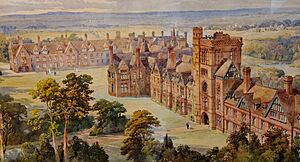
In 1869, a new exam for women was created. However, Emily Davies strongly believed that women should take the same challenging exams as men, known as the Tripos exams.
Girton College first opened on October 16, 1869. It was called the College for Women at Benslow House and was located in Hitchin, Hertfordshire. This location was chosen because it was a safe distance from Cambridge. It was one of the first places in England where women could live and study at a college.
The first term began with five students. The first three students to unofficially take the Tripos exams in 1873 were Rachel Cook, Louisa Lumsden, and Sarah Woodhead. They were known as "The Pioneers."
In 1871, enough money was raised to buy land closer to Cambridge. So, in 1872, 16 acres of land were bought near the village of Girton, Cambridgeshire. The college was then renamed Girton College and moved to its new home in October 1873. The first building was completed, and 13 students were admitted. Over the next few years, more buildings were added, including the library and the Great Hall. By 1902, Girton could house 180 students.
In 1924, King George V officially recognized Girton College. However, it was not yet a full college of the university. Girton and Newnham, another women's college, were called "recognized institutions for the higher education for women."
Finally, on April 27, 1948, women were allowed to become full members of the University of Cambridge. On that day, Girton College officially became a college of the university.
Becoming Coeducational (1976 to Present)
After World War II, many universities in Britain started to admit both men and women. At Cambridge, some men's colleges began admitting women in 1972. Girton College had already made plans in 1971 to allow men to join in the future.
In November 1976, Girton's leaders voted to admit men. This made Girton the first women's college at Cambridge to become coeducational. In January 1977, the first two male teachers joined. Male graduate students arrived in 1978, and male undergraduate students came in October 1979. One reason for this change was that colleges that became mixed seemed to attract very bright students.
When male students arrived, the college's social areas had to be made larger. A college bar was opened in 1979, and new sports fields for rugby, cricket, and soccer were added from 1982 onwards.
The head of Girton College is called the Mistress. This person is in charge of the college's activities. The current Mistress is Elisabeth Kendall, who took on the role in 2022. Even though the college is now coeducational, the head is still called "Mistress," even if a man holds the position.
Student Life and Accommodation
Like many Cambridge colleges, Girton provides rooms for its students. Rooms at the main site are connected by corridors, so students can walk between different parts of the building without going outside. Some rooms were designed by the original architect, Alfred Waterhouse. All undergraduate rooms are charged the same weekly rate, no matter their size or features. Girton is one of the few colleges that does this. The main site has 348 rooms available for students for most of the year.
Each year, students choose their rooms through a lottery system. First-year students are given rooms randomly. Students who get less desirable rooms in their first year get to pick first in their second year.
Since 2017, graduate students live in a special building called Swirles Court. One house on Huntingdon Road is used for research fellows (teachers who are doing research).
Swirles Court
Swirles Court opened in 2017 and is part of the Eddington area. This building offers up to 325 single rooms, each with its own bathroom, for graduate students and second-year undergraduate students and above.
It is named after Bertha Swirles, a former student of Girton. Swirles Court is open all year round for students. It has its own porter (a staff member who helps students), laundry facilities, and a separate mailing address from the main college.
Wolfson Court
Before 2017, graduate students lived at Wolfson Court, which was closer to the city center. Wolfson Court was built in 1971 and had its own dining and accommodation facilities. It was also used for conferences.
Main College Site
Architecture
The first and most important parts of Girton College were designed by Alfred Waterhouse. He built the main site, including the Old Wing, the Hospital Wing, and the Stanley Library, between 1873 and 1886. He also designed the gatehouse tower. The buildings are made of red brick, which is typical of Victorian architecture. They have special black mortar and terracotta details. The roofs are steep with decorative tiles. In 1913, the college site covered 33 acres.
Library
Girton's first library, the Stanley Library, was created in 1884 with a gift from Lady Stanley of Alderley. It was a very comfortable place with stained-glass windows and leather furniture. Most of the books were donated. By 1932, the collection had grown so much that a new library was opened. This new library was designed by Michael Waterhouse, a relative of the original architect. It has an upper reading room made of oak and a ground floor for the book collections.
A modern extension to the library, called the Duke building, opened in 2005. It offers computer facilities and another reading room. This building was named after Alison Duke, a former teacher and important donor. It has won several awards for its design.
Chapel
Plans for a chapel at Girton College began in 1890. Building started in 1899 and was finished in 1901. The chapel was designed by Alfred Waterhouse and Paul Waterhouse. It can seat about 200 people. The inside is quite simple, with beautiful oak carvings made by the mathematician Margaret Meyer and students. In 1910, a wonderful organ was added, thanks to donations. This organ was rebuilt in 1974 and is still used today. A second organ was bought in 2002.
In 1952, a stained-glass window was put in the chapel. It shows scenes from the life of Jesus and symbols of faith. The college's rules state that services in the chapel usually follow the practices of the Church of England. However, other religious services can also be held there. Today, at least two services are held each week. The college has a chaplain who helps organize these services.
Gardens
When the college land was first bought, many trees were planted. Today, Girton's gardens are very large compared to those of other Cambridge colleges. A pond in the gardens was created in 1884 from the digging needed to build the library. A report in 1983 found sixty different types of birds in the gardens. You might even spot a rare type of black squirrel there sometimes! The Fellows' garden was redesigned in 1992 and includes a green theatre.
Lawrence Room (College Museum)
In 1934, the Lawrence Room at the main college site became the college museum. It is named after Amy Lawrence, a natural scientist who studied at Girton. The museum has collections from Anglo-Saxon times, Ancient Egypt, and the Mediterranean region.
The Anglo-Saxon collection comes from discoveries made during construction work at the college in 1881 and 1886. An Anglo-Saxon cemetery from the 5th and 6th centuries AD was found. Many items, like household tools and personal belongings, were found there.
The most famous item in the Egyptian collection is a portrait mummy with the name Hermionê Grammatikê (meaning "Hermione the literary lady" or "Hermione the language teacher"). This mummy is very well-known and has been shown in many places. It dates from the first century AD and was found in 1911 by archaeologist Flinders Petrie. Hermione is thought to have been a wealthy girl between 18 and 25 years old. Petrie wanted the mummy to go to a women's college because of its name. So, in 1911, Hermione came to Girton College, where she has been ever since. The Egyptian collection also has four mummified baby crocodiles, which were thought to bring good luck.
The Mediterranean collection includes items from both Classical and earlier times. A collection of Greek Tanagra figurines, which are small statues from the 4th and 3rd centuries BC, are among the most interesting pieces.
People's Portraits
Since 2002, Girton College has hosted the People's Portraits exhibition from the Royal Society of Portrait Painters. This exhibition is open to the public.
The exhibition aims to show portraits of "ordinary" British people from around the year 2000. It toured Britain before Girton College won the chance to house the collection permanently. New paintings are added every year. The collection now has 60 paintings by various artists. Girton was chosen because it is one of the largest and most diverse colleges in Cambridge, which fits the idea of showing portraits of everyday people.
Social Spaces
Girton has a Social Hub, which students call "Schlub." It's a café during the day and a bar in the evenings. You can get food like paninis and pizzas during the day. Girton also has a cellar bar, nicknamed "Deep Schlub." This area has a pool table and is a place for students to relax and socialize. The "Deep Schlub" also hosts college parties organized by the student council. It was recently renovated in 2023.
Student Activities
Formal Halls
Girton College has formal dinners, called formal halls, once a week. These dinners usually have about 160 students and guests.
Sports Teams
Girton College has many student-run sports teams and its own sports fields for cricket, football, hockey, netball, and volleyball. The Girton College "Cloud Leopards" are the college's lacrosse team. The sports fields were improved in 2009. There are teams for both men and women in sports like badminton, football, hockey, rowing (Girton College Boat Club), and rugby. Some teams, like cricket, cross country, and swimming, are open to both male and female students. The college also has outdoor tennis courts, indoor squash courts, and a gym. The indoor heated swimming pool has been used since 1900. A new sports building, the John Marks Pavilion, opened in 2013.
In 1995, the men's football team won a major college competition for the first time.
Music
Music is very important at Girton College. The college has a strong history of music and is often ranked among the top colleges for music at the university. The Girton College Music Society, run by students, holds weekly concerts. The college provides four grand pianos, a harpsichord, and two organs for practice. All undergraduate music students get a practice piano in their room.
The chapel choir has 28 members and sings in the college chapel every week. The choir has released eight music CDs. Girton also offers scholarships for students who play the organ or sing in the choir.
Societies
Girton College has many student-run clubs and societies for different interests. There are societies for subjects like Biology, History, Economics, Geography, Music, Medicine, and Law. There is also an Art society, a Film society, and the Girton Amateur Dramatic Society (GADS), which puts on plays. Other groups include Girton Amnesty International and the Orchestra on the Hill.
Spring Ball
The Girton Spring Ball is a traditional dance event that has been held since at least 1883. It has grown over the years and is now a large event that takes place across most of the college site. The Ball is usually held every year on the Friday after the end of the Lent term. It is organized by a committee of about 20 Girton students.
Notable Alumni
-
Margrethe II, former Queen of Denmark
-
Brenda Hale, Baroness Hale of Richmond, former President of the Supreme Court of the United Kingdom
-
Arianna Huffington, co-founder and editor-in-chief of the Huffington Post
Symbols of Girton College
Arms (Coat of Arms)
The college has a special coat of arms, which is like a symbol or emblem. It was designed using symbols from its founders and important supporters. The design was carefully chosen to represent these people without being too complicated.
In 1928, the college was officially given its coat of arms. It features a shield divided into four sections, with green and silver colors. It also has a special cross, a round ermine spot, and red crescent moons. These symbols are used on seals, shields, and other college items.
Gown
Students at Girton College wear a special gown, which is a traditional academic robe. It looks like the gowns worn by other undergraduate students at the University of Cambridge, but it has a unique feature: the sleeves are sewn up for about eight inches from the shoulder. Students also wear a square cap. However, to remember the time when women were not allowed to get degrees from the university, gowns are not worn during the college feast, which celebrates students in their final year.
Grace
Girton College has a traditional short prayer, or "grace," said in Latin before and after meals in the formal hall. The short grace, Benedictus benedicat (May the blessed one give blessing), is said at the start of the meal. Benedictus benedicatur (May praise be given to the blessed one) is said at the end. These short graces have been used since the college was founded.
There is also a longer, full grace, which was composed in 1950. This longer grace is sung on very special occasions, like the Foundation Dinner, and once a year at the College Feast for final-year students.
Here is the full grace in Latin and its English translation:
|
Benedic Domine, nobis et omnibus huius collegii alumnis, |
Bless us, O Lord, and all members of this college, |
Songs
The oldest college song, "The Girton Pioneers," was written by students in 1873. It celebrates the first three students who took the challenging Tripos exams. It is sung to the tune of "The British Grenadiers". Here is the first part of the song:
Some talk of Senior Wranglers,
And some of Double Firsts,
And truly of their species
These are not the worst;
But of all the Cambridge heroes
There’s none that can compare
With Woodhead, Cook and Lumsden,
The Girton Pioneers.
See also
 In Spanish: Girton College para niños
In Spanish: Girton College para niños
- Girton College Boat Club
- Category:Alumni of Girton College, Cambridge
- Category:Fellows of Girton College, Cambridge
Other Institutions Named Girton
- Girton Grammar School, Bendigo, Victoria, Australia
- Girton Hall, University of California, Berkeley


